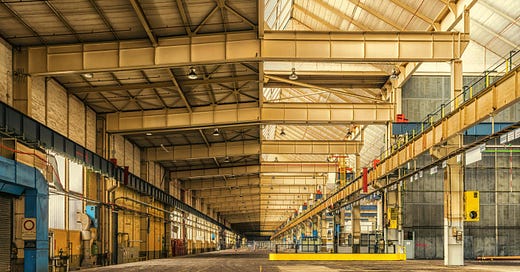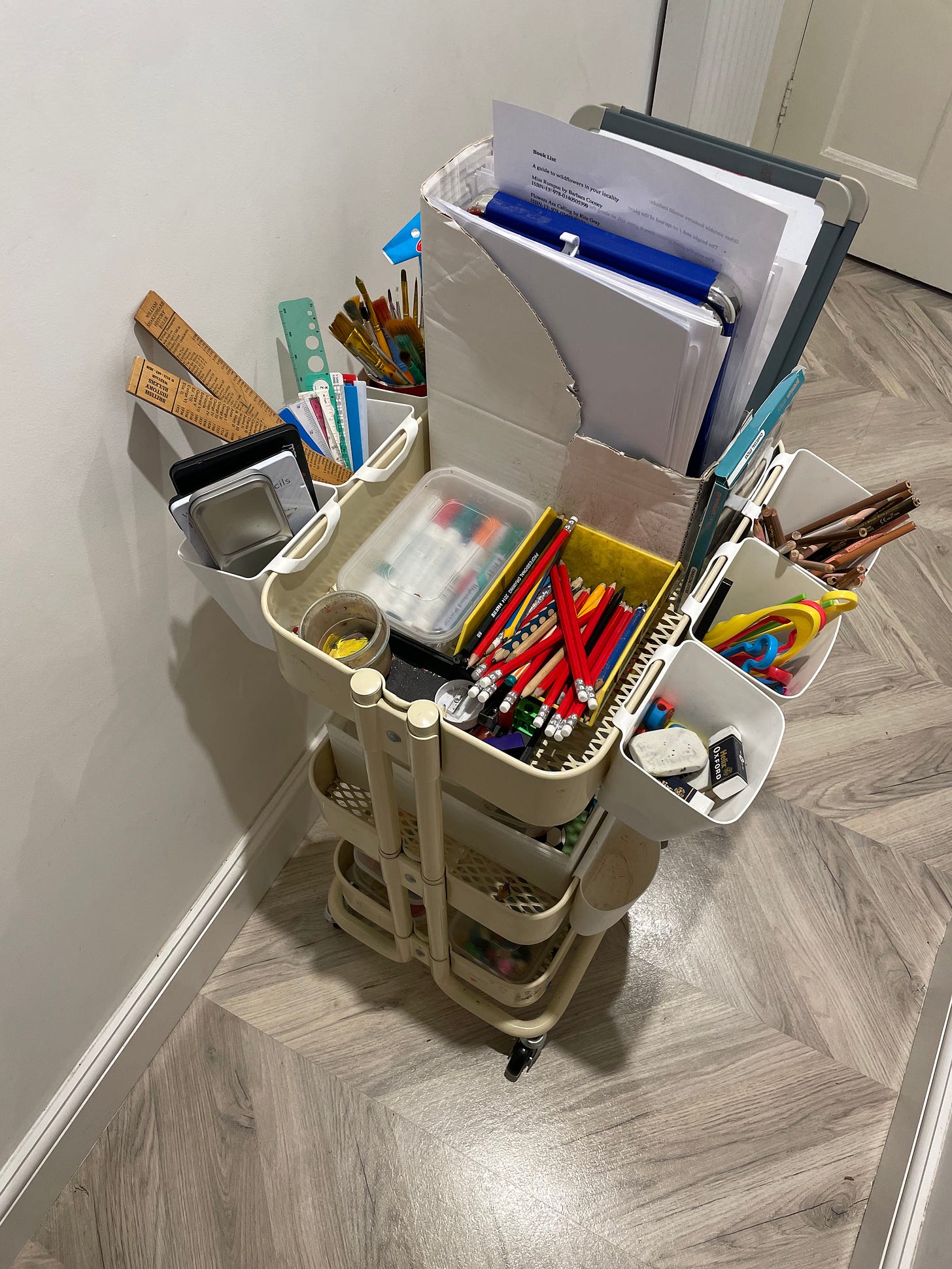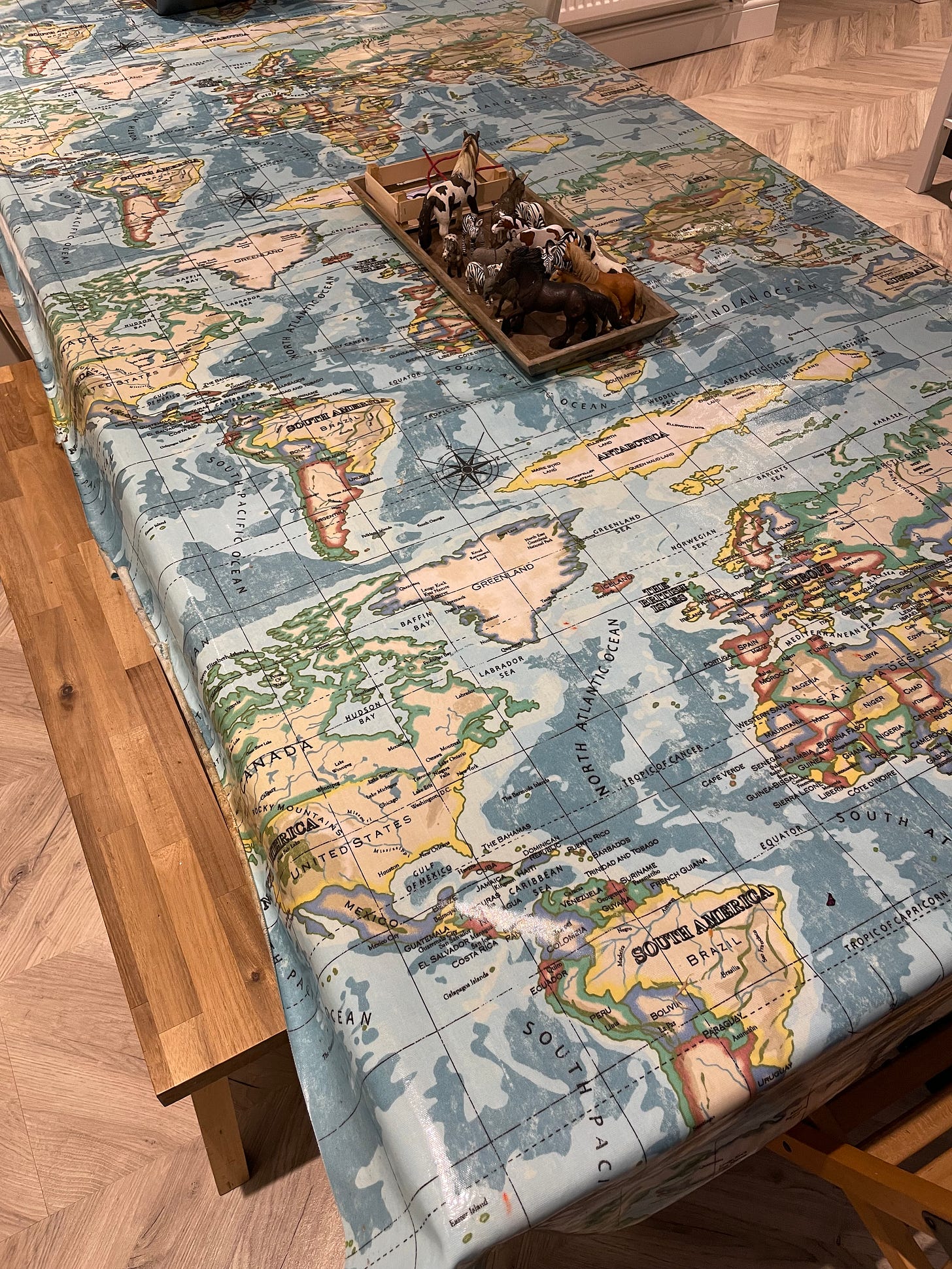Here’s a tale for you: when I first started home educating, we had five children and I was pregnant with number six. We were mid-building renovation (think, the back of the house missing in the middle of an English winter), and the only space we had was the small room where we ate, that also housed the freezer, food and tumble dryer.
And then the builder abandoned us.
For a year, I taught in a building site, until we found a builder willing to finish the work. It was chaotic, noisy, dusty and not the soothing learning environment I envisaged.
BUT! The learning happened, without a dedicated space, without bookcases groaning with delicious non-fiction, without shelves of beautiful craft items, beckoning invitingly… In fact, I would go so far as to say that the learning was streamlined and creative and inventive because it had to be. We spent as much time as we could outside at the local woods, or the nearest National Trust property, where I would take flasks of hot chocolate & our read aloud books and make it all very Famous Five. Books came from the library, or our local charity shop. Any free museums near us became places to study inside.
Now, I’m not advocating for a building site home education set-up. It’s most definitely not a longterm solution I recommend. But it does go to show that these beautiful home education spaces you might see online, are not necessary in order to competently educate your children.
There is a balance though, some home educators spend a lot of their time away from the home, educating their children. Some spend more time at home and need a space for resources and learning. For us, once the building work was completed, we did move to spending more time in the home learning, until it was somewhere in the middle: 50% out, 50% in. You’ll find your balance, there is no right or wrong way.
But what did those endless months in a very small space teach me about carving out a home education space in the home…? Here are my top tips if you are short on space, but high on stuff:
Storage on Wheels - I bought a couple of the Ikea RASHULT trolleys and I loved them so much, that over the years I have bought several more. In a home education setting, they are ideal for storing craft, morning time books, workbooks, maths resources, you name it. Pictured below is our current everyday stationery trolley, which, as you might guess, has all the bits on we need to do, well, everyday work
Dining Table Tray - I bought a thin, rectangular tray from Hobbycraft to display any “nature of the week” or topic related items. This way, the items were contained in a space, plus, they were always visible for discussion. At the end of the week, the items were removed to be replaced with new ones.
World Map Tablecloth - I adore our tablecloth, bought from John Lewis, showing a map of the world. It has been invaluable in geography work, and, as it’s always there, geography work is always happening! Pictured below is our table, complete with tablecloth and tray:
Wall Storage - now I don’t mean, shelves (although they are obviously great), I mean storing resources on the walls. We hung ancient history timeline banners across the window, models of the solar system hung from the ceiling, the walls displayed a chronology of British monarchs as well as a periodic table made from individual cards.
Finally, accept that you don’t actually NEED any of these things in order to home educate. Your home doesn’t have to resemble a classroom, your home doesn’t have to resemble anyone elses. All you need to home educate is, ideally, your child.





